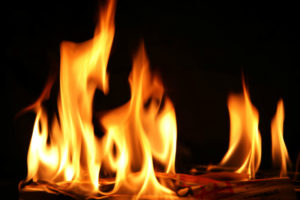 Getting the most out of your fireplace takes more than just throwing wood and some kindling into the firebox. Starting a fire the wrong way can lead to sluggish fires that do not burn well, burn out quickly, or need to be stoked or have wood added constantly. By taking the time to correctly build a fire, you can spend less time stoking and more time enjoying it with family and friends. The following easy-to-follow tips can help you build a better fire the next time you use your fireplace!
Getting the most out of your fireplace takes more than just throwing wood and some kindling into the firebox. Starting a fire the wrong way can lead to sluggish fires that do not burn well, burn out quickly, or need to be stoked or have wood added constantly. By taking the time to correctly build a fire, you can spend less time stoking and more time enjoying it with family and friends. The following easy-to-follow tips can help you build a better fire the next time you use your fireplace!
Start a top down fire
How you stack your logs has a big impact on the quality of your fire. Top down fires minimize the need for stoking by making sure the wood gets enough oxygen as it burns. Build a top down fire by putting the largest logs on the bottom of the grate, ends facing the front and back of the firebox. Continue pyramid stacking progressively smaller and smaller logs, intertwining the stack with kindling. Ignite the top log and kindling; as the wood burns down it will naturally ignite the logs underneath it, reducing the need to add to or stoke the fire.
Warm your flue
If the weather outside is significantly colder than the temperature inside your home, warming the flue before starting a fire can reduce smoke blow-back and drafting problems. Open the damper before creating a kindling bundle of newspaper; ignite the newspaper and hold it under the open damper for several minutes – or until it burns up – to gradually warm the air temperature in the flue.
Use the right firewood
The type of firewood you use can have a major impact on the quality of your fire. For best results, seasoned hard woods should be used. Seasoned wood is made when logs are cut, stacked, and allowed to naturally dry by exposure to the elements; this reduces the moisture content in the wood and helps fires burn hotter, longer, produce less smoke, and create less creosote.
If you want to create a more aromatic fire, seasoned soft woods like cherry, pine, or fir can be used. However, soft woods often burn at a lower heat and create more smoke, making them better tailored to outdoor fire pits than indoor fireplaces. Using citrus peels as a natural kindling is an easy alternative that can add additional fragrance to your fires.
Have your chimney swept
Chimneys should be swept and inspected annually. Doing this ensures that the fireplace and flue are clean, undamaged, and safe to use. Chimney inspections can also help spot areas of damage or deterioration in the chimney and flue that may not be easily recognized by homeowners. Certified chimney sweeps can also help diagnose and repair fireplace performance problems such as drafts, odors, or leaks.
Get the most out of your fireplace this winter by following our easy burning tips. For more information on starting a good fire or to schedule your next chimney sweeping, contact Jack Pixley Sweeps today!
